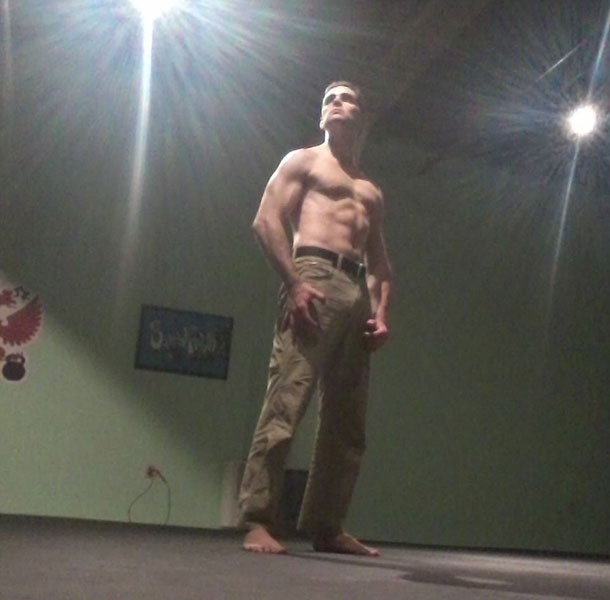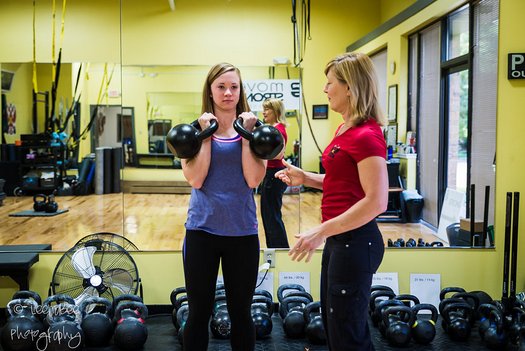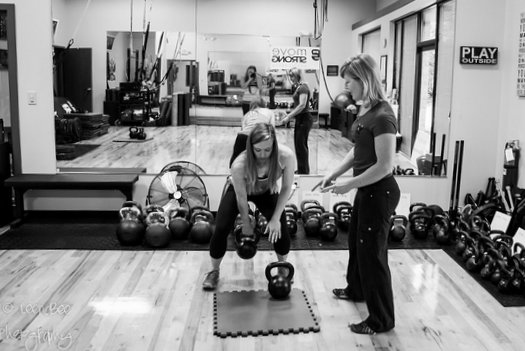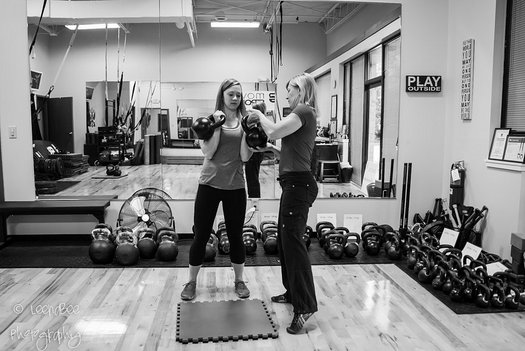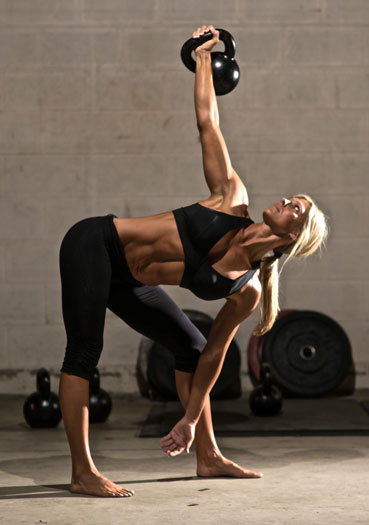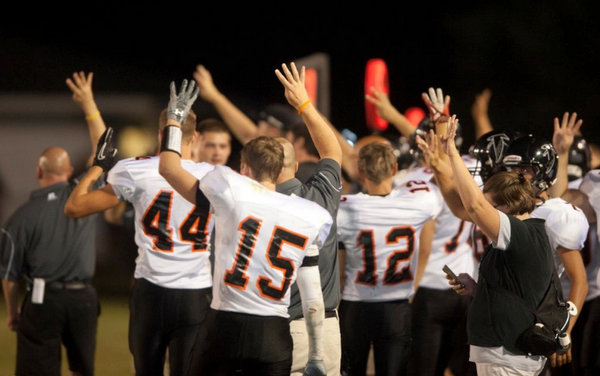
It is when you feel like you can break.
You have put everything on the line.
Heroes have been made, dreams have been dashed.
It is the fourth quarter. I remember playing basketball that time, the time when everything came down to how you prepared. How well could you execute even though you were shaky, exhausted, and had been competing your hardest for three previous quarters.
The fourth quarter is when you knew if you were really ready. All the theories get tested, only results win! You had to be strong, you had to be fit, you had to be mentally tough.
The idea of the fourth quarter helps remind me what our training should really be teaching us. Being able to hit a PR is awesome, lifting big weights, terrific, but if they can’t be used when we need them the most what is the point?
Sports aren’t the only places where we see the fourth quarter mentality. Overworked parents, stressed out jobs, they all challenge us to find inner and outer strength to perform. Can we do it though? Is it possible to have great fitness and strength?
Can We Have It All?
Having extremely high levels of strength or endurance takes some very specific training. The truth is that most of us are looking for really good levels in both. The reality is we can have it all with smarter programs.
Lifting maximal weights is awesome, but life and sport rarely happens on a platform. The truth is, most activities look at how you can repeat high levels of strength and power. In fact, renowned strength coach, Robert Dos Remedios, considers power endurance and work capacity the KEYS to athletic success:
“I’m often asked about my goals in my conditioning programming and my answer always seems to come back to one thing, WORK CAPACITY. If we can continue to turn the knob up and get more and more out of our athletes we will build their ability to keep pushing, to improve their all-important strength and power endurance. In essence we are assuring that over time, we will also be able to train harder and harder for longer periods of time with greater intensity. Perhaps most importantly, work capacity building sessions helps to forge amazing confidence…this is often the psychological variable that can be the difference between victory and defeat.”
Don’t misunderstand Coach Dos, they lift hard, they lift heavy, but they understand how to combine all the elements to being successful beyond the weight room! Can you do it over and over again? Do you have that fourth quarter strength or do you fall apart? Sorry, a few sled runs and pushes don’t do it either.
Don’t get me wrong, I am not suggesting the strength endurance crowd has it all right either. Many people think that to develop strength endurance that you simply have to perform outrageous repetitions or destructive workouts. Unfortunately, so many of these people fall prey to really low levels of strength and the engine to their endurance ends up being quite low. Not to mention the amount of overuse injuries they often incur!
The Smarter Fitness Program
When DVRT Master and RKC, Troy Anderson, shared with a much better way of training I couldn’t believe I hadn’t thought of it myself! Troy is no novice to tough training, having played football, served in the military, competed in strongman, and growing up on a farm in Wyoming, Troy knows fourth quarter strength all too well.
The concept is relatively simple. Four sets, increasing repetitions, minimal rest. Well, that’s nothing new right? The structure of this program has important principles that need to be adhered to in order to succeed.
Each series has four intermittent sets of 3, 6, 9, and 12 repetitions. The lower repetitions are designated for heavier or more complex movements, where nine and twelve allow us to work on other fitness qualities. The key is to only give yourself no more than about 20 seconds from one series to the next. Let me give you a few examples using hardstyle and Ultimate Sandbag movements.
Workout 1:
Kettlebell Single Leg Deadlift x 3, rest 20 seconds
Ultimate Sandbag Clean and Press x 6, rest 20 seconds
Goblet Squats x 9, rest 20 seconds
Body Rows x 12, rest 1-2 minutes
The above workout showed how we got to load a specific movement pattern (the hip hinge) with heavier loads and as we went through the series went to less complex exercises involving other movement patterns. We began with the hip hinge, moved to an vertical press, then squatting pattern, finally a horizontal pull.
The series began with the drill with the most stability when the body was freshest. That means we are still getting elements of maximal strength and not neglecting strength endurance. After the cycle rest 1-2 minutes and then try to repeat. The goal is to hit 3-4 total rounds.
How would other workouts look? Here are few examples….
Workout 2:
Pull-ups x 3, rest 20 seconds
Ultimate Sandbag Rotational Lunges x 6 per side, rest 20 seconds
Spider man Push-ups x 9, rest 20 seconds
Kettlebell Swings x 12, rest 1-2 minutes
Workout 3:
Get-ups x 3, rest 20 seconds
Ultimate Sandbag Lateral Step Cleans x 6, rest 20 seconds
Renegade Rows x 9 per side, rest 20 seconds
Bear Hug Paused Squats x 12, rest 1-2 minutes
During these workouts you should definitely try to use a challenging load. However, you are going to need to make sure you can repeat your efforts and not have too much of a drop off. For example, if you see more than a 20% drop off in weight you can use, the weight was probably too much. The same can be said if you see a 20% drop off in reps you can complete.
Can You Modify 3-6-9-12?
Of course! You can make it more specific to a training goal. For example, if you really wanted more of an emphasis of strength or power, you could make it 1-3-5-7.
Want to build that type of work capacity and power endurance that leads to championships? Take this challenge from Coach Anderson. Take your 3-6-9-12 plan and after each round (completing the entire 3-6-9-12 series) add a repetition to the next.
Example:
Round 1: 3-6-9-12
Round 2: 4-7-10-13
Round 3: 5-8-11-14
You would still take the rest after each series, but you may have to drop a bit of weight.
Will it be a challenge? Absolutely! Is it designed to destroy you? Not really. If you find it incredibly difficult you might find you had been neglecting the fitness qualities that can really help you make that next jump in your fitness.
Fatigue has been shown to be somewhat movement and muscle group specific. By changing the movement pattern we are taking some stress off the system and muscles. In other words, you should be able to continue high levels of work even in spite of some accumulating fatigue.
I know there will be some that argue that strength should be done without any fatigue, to them I say that isn’t the real world. If functional training is meant to prepare us for the sport and every day life then neither is perfect or ideal. You don’t have to sacrifice great training to grow, rather evolve the way you see fitness!
***
Josh Henkin, Master RKC, CSCS has been a RKC instructor since 2003 and has implemented kettlebell programs for major Division I programs, SWAT teams, and many different general fitness programs. Josh is also the creator of the DVRT Ultimate Sandbag Training system where he is a highly sought after presenter worldwide. He can be reached at info@ultimatesandbagtraining.com or http://DVRTFitness.com. Josh Henkin is also the author of DVRT, The Ultimate Sandbag Training System now available in paperback and ebook format.
